I seem to have spent most of May dealing, in one form or another, with Strange Futures, Deep Time and Art. This series of ten reviews covers;
StarShip Troopers (the book)
Andor, Series Two
Otherlands by Thomas Halliday
Entangled Life by Merlyn Sheldrake
Mission Impossible; Final Reckoning
Hellebore, The Art of Missuspacey
Rogue One/A New Hope
Lilo and Stitch (original animation)
‘Hunt the Space Witch!’ by Robert Silverberg
Starship Troopers (novel)
By Robert Heinlein
Subtitle; Johnny Rico is a bald Philippino! (& possible virgin!!)
FRUSTRATIONS WITH HEINLEIN
Always interesting, always frustrating.
Bloat - the only other Heinlein book I have read; Stranger in a Strange Land was cursed with prolix lectures by Heinlein-as-character in which we consider pretty much anything Heinlein is or has been thinking about in a didactic fashion.
Heinlein is not stupid, but is nowhere near as clever as he thinks he is, and he thinks like an enlightened engineer, or a like American-Plus; like an engine that has not been re-designed or re-conceived but simply had more power added, more fuel, faster, more revolutions, but the texture of his thought, his ability to synthesise and summarise the complex, to investigate his own conceptions, to assume the perception of the observing Other and slide gracefully, into that near-shorthand which often plays a part in the expression of ideas by very-good writers, is nil. He writes his lectures like he is explaining to himself. His dialogues are classically Socratic, i.e.; between an strawman and a mary-sue, revealing simply more ways for the writer to confirm what they already wanted to write.
So far little within his books is questioned from within. No praxis, just the logical working out and expression of an idea. The writing of an anglo-german protestant Engineer. Literal, linear, explicit and long.
Clunk - Heinlein exhibits some interesting and (for his time radical), possibilities regarding race and gender (RICO IS PHILLIPINO!!!!) but none of this matters because every single person he writes is psychologically, behaviourally, in action and especially in speech, a middle class white male coming of age in the 1950s. They might be different colours, different genders, and have different nationalities, but they all sound, think and broadly feel, exactly the same. His mind ranges but his conception of self remains relentlessly and brutally provincial, and confident.
Writing voices of your time is hardly a crime, even in sci--fi. It now gives the book a slightly charming quixotic bound-to-history feel, but it does grate after a while, especially combined with Heinlein’s relentless prolixity and utter overwhelming confidence. It’s this relentless machine-like lack of the subjective, of the oblique, the sheer total overwhelming lack of self awareness, driven relentlessly over the page like a steam train going down tracks, that makes all of Heinleins flaws worse and worse.
BORING NON-SCHIZO FASCISM
How fascist is this book? In many ways, strangely little. Or at least, very unlike any form of Fascism that has ever actually existed.
No hatred of enemy; the Bugs are a literally species-level, galaxy-dominating threat. Fascism loves a good enemy; hate is life. But there is no anti-bug propaganda, no deep sick sense of something utterly wrong in the world that must be eradicated, no intuitive sense of cleanliness and purity that is tortured by the existence of The Bug. Neither does Johnny Rico seem to actually hate the bugs, (though he is a moose), they attacked earth, they killed his mum! Worse even, they killed members of his squad. Yet... nothing. No Bug trophies, no grand hate or opera. Fascists really do tend to actually hate quite a lot, but in 'Troopers', we fight a war of possible extinction without much visible hate. Very odd.
No Great Leader; who is the Sky Marshall? Rico doesn't seem to know or care. No portraits on the walls, no Sky-Marshall-Thought little blue book. Who is on the coins? We don't know. Are their political parties? No idea. Nothing about the personalities in charge, even a little. Very rare and strange for any kind of Fascism.
No Commies; in the world of ‘Starship Troopers’ we know there were Commies, for they play a part in the geopolitics that created the 'Federation', but where are they now? In every real life situation, Commies and Fash turn up around the same time, in response to the same events, like bruising and bleeding, invisibly supporting each other, provoking and sustaining each others fanaticism and slowly degrading the rule of law. IRL Fash were obsessed with Commies and visa versa. Here - not a peep. Did they kill them all?
No fifth column; where are the jew-tunnels? the alien face masks? Where are the mind-controlled traitors? The secret enemy? I mean the seeeecret enemy? The super-conspiracy that justifies and requires the endless purging? Most irl Fash tendencies, (and a lot of Commies to be fair), are obsessed with SPIES, traitors, invisible cultural corruption, hidden foes, manipulation, centuries-long secret plans etc etc. No lie, they vibe hard on this shit. But it seems we finally have Fascism without schtizoidal tendencies. No-one is tunnelling to the centre of the earth to find Agartha to use Viril against the Bug-Jewish mind control. Dull.
No rebels, radicals or resistance; they all just stopped and disappeared. Nice of them. I mean in this whole largely disenfranchised society, we don't run into anyone waving the black flags or crying 'bring back democracy'. It’s simply not considered.
Hyper-competent technocratic leadership; alleged to be good with technology, the Fash in real life were... ok. Good in a number of ways certainly. But often quite bad and nutty, making a lot of very odd decisions. Back to shtizoidal energy again - there isn't any here. Things are simply run well by intelligent dispassionate men. They aren't in real life now, and often weren't during actual fascism, but in Starship Troopers that problem is just solved.
Feminist fascism; fash really really does not meld well with a lot of ways women want to live. But here we have gender-equal opportunities, (with a lot of Heinleinian 1950s psychology and social roles, making the whole thing feel very odd and bubbly, like a fizzy mixture). Another problem that I suppose was simply solved.
MOOSE
Of course there are, or could be, both diegetic and metatextual reasons for all of this. Foremost; Johnny Rico is a big moose. Raised in a 'good' culturally mainline family, top boy at his school, a natural infantryman who wants to serve. There is no reason for him to come into contact with many, or any, of the negative aspects of his own society. There must still be, somewhere, men like Johnny, those made for the world and for whom the world is made, moving through life essentially according to plan, following the rules and the rules working out and the whole being proved good and right.

Second - this is an authoritarian militaristic culture and its highly likely the government is simply lying and covering things up.
But this is a bit of a cheat, because of the kind of book this is. Heinlein is writing some kind of deliberate "what if things worked like this" semi-ideal society fiction here, and the functionality and success of the Federation is part of the story he is telling and the idea he is communicating. Going outside that and asking the very reasonable, and, (if real), sane question; what if the powers are lying? Is a fair response to this as a simulation, but not to the book as a statement.
The statement is something like; what if this near-future somewhat fascist militaristic non-democratic society, existed, and worked out well, and was justified. What then?
Saying - "well it wouldn't, for this and this and these reasons", shatters the argument, but does not face it. The idea is parried rather than defeated.
I do not say it is a good idea, but it is a strong one, and many of the criticisms of it, and responses, feed off the unlikelihood of its existence and success, or simply ironize it away, rather than accepting it as-is, and responding to that.
Verhovens ironic Starship Troopers is part of this long, slow, cultural defeat in which liberalism ‘magics’ away the power of its opposing ideas simply through ridicule. But Verhoven grew up partially in Nazi Europe, he saw the propaganda films as a kid, and actually liked them, he understood on an intuitive level, the power of the idea, then made a lot of money making fun of the idea for a western audience. The film is a little like a Grizzly Bear head hanging in a hunters cabin, but the hunter actually just bought the head on eBay, never faced the bear themselves.
Heinlein’s 'cleaning up' of Fascism into competent non-democratic technological militarism, might make this book more evil than it seems, but that is still the real challenge here.
POWER ARMOUR BIBLE
No Computers! Everything is fly-by wire. A piece of pre-60's analogue oddness which has looped back around to being oddly prescient. Heinlein has no microchips in his suits because they don't exist, we might have no microchips because they can be hacked. Pure fly-by-wire haptic response engineering baby!
Space Marines may look a bit like Mobile Infantry, but they sure as hell don't fight like them. Who does? The Tau, and Gundams generally. The Tau's hop-and-fire, always-redeploy long range complex-plan firefight method of war is torn almost directly from Starship Troopers. Gundam are a bit more like humanoid Fighter Jets but in their high mobility and very long rage super-weapons, still a bit like Heinlein’s suits.
Robert Heinlein invented fucking power armour! What the fuck have you achieved today soldier???
MASCULINE OPERA
It’s a fantasy of paragons; no evildoer or fake soldier, or even fractured, doubting friend, assaults this noble soldier. EVERYONE is a paragon. Even fucking Hornblower had a few bad eggs to deal with. Even Captain Picard had Will Rikers shady clone!
There are parts of masculine psychology, or the masculine ideal that, for all his clunky speech, Heinlein gets down perfectly, though often in operatic wize.
'The last thing a soldier heard before a drop would be a female voice wishing him well.' - yep, checks out.
Rico having a ritual fist fight with his friend/opponent to settle a matter of psychological command, Rico technically loses, but his friend picks him up and begs Rico to knock him out. The guy knows Rico should be in command, just needed to fight him enough to be ok with it. The M.I. are just that dang noble.
Ricos dad joining up! They even end up in the same unit at the end! Captain Rico hugs his dad, now under his command, before they drop into combat.
Ricos second (or third) father-figure, the tough drill Sergeant, ends up his subordinate during a tight mission with Rico now technically over him. Heinlein doesn't mention this till the end. The story is not about psychological stresses when relationships are inverted by circumstance, but about the absence of such stresses. Everyone is a paragon and does their duty. The Sarge is then promoted over Rico's head, and Rico is pleased and relieved; it would be wrong to outrank such a great guy.
Ricos father 2.0, his moral studies, (and propaganda) teacher, gives him a tough time but eventually asks for Rico to wear his Lieutenants pips during his first command, yes he secretly respected him this whole time, he just had to be tough about it.
In fact I think every possible father figure gives Rico a hard time, with Rico only finding out much later that they think he's a pretty good egg and care about him a lot. It happens multiple times. The naïve way this is repeated makes it silly but like a lot of gauche things its only repeated because it exposes a general psychological truth; that quite a lot of men do actually want something just like this; a tough drill sergeant/philosopher teacher/redeemed father, who give them a lot of Mighty Tests and are pretty distant about it but who in the end, give them the Nod of Masculinity and welcome them into the unspoken league of Guys Who Went Through It.
The ritualised separation of Male/Female spaces; Is Johnny Rico a virgin? He has a bunch of 'dates' with Carmen, but what does a 'date' mean in this culture? he has a lot of 'shore leave' on what are basically pleasure planets, but what exactly does this mean? He may be a hound dog or a virgin, he talks about girls and beauty a lot in the abstract and in distant hokey Heinleinian terms, but we have no idea what intimacies he has experienced, either sexual or emotional.
It is a mans tale, about a mans relationships with men, often friends, more often comrades, and an absolute constellation of father figures for Rico to strive for and ultimately impress. Those are really the most intimate and revealing relationships in the book.
A story of men facing challenges and learning complex things, in which the actual fighting is not even the centrepiece. It happens and is important, but more time is taken up with the Heinleinian lectures and the complex procedures, politics and methods of military life, much of which seems drawn from life, often told through Wise Fathers.
An important book. A frustrating book. Three stars, but a ‘swingy three’ rather than a ‘mid three’.
Andor; Series Two
(I only just realised, arranging this, that I went straight from Heinlienian Fascism; what-if? to Lucas Space Jew Anti-Fascist Revenge Paracosm. How odd.)
Somehow, Disney managed to make a good, slightly posh adult Star Wars, which is also the only consistently good, (Mandalorian went off rapidly), Star Wars they have ever done. No-one watched this but everyone who did is on the subreddit yapping about it. Now we are back for Season Two - will Tony Gilroy and his blessed Deep Substrate Foliated Kalkite coiffure be able to do it again?
Yes.
I binged this over a handful of days while recovering from being sick. My generally high opinion is broadly that of the reviews, which leaves me little to say.
A few things come to mind;
FICTO-PROCEDURALISM
Gilroy being quite a careful and systematic writer meshes perfectly with the highly-evolved level of detail in the Star Wars Paracosm. A man who naturally will want to be able to choose between a constellation of differing intelligence committees and organisations when writing a scene, or will want to choose exactly the right Imperial ship pursuing littoral enforcement duties (its a re-purposed Gozanti-Class Cruiser, the Empire never invested enough in littoral small units); well good news, we have 50 years of background, comics, RPG books and multi-layered Wookiepedia articles laying our, in extensive detail, the orgs, committees, tac operating groups etc etc of the Star Wars universe. So a man who paints naturally and comfortably in detail is given all the details he needs.
MORE ISB MEETINGS
Who would have guessed that the real crowd-pleaser for a Star Wars series would be... Anton Lesser riding his committee of the ISB like a rodeo. Were the real stars of the Bourne series the Gilroy-written office-opera elements where a character actor storms into a closed tech-coven, throws off their snow-splattered jacket at shouts at a bunch of nerds? The ISB meetings are honestly the most fun thing about ‘Andor’. Please make a LEGO set of them.
ACCIDENTAL MODERNISM
The plan for a five year series, rapidly compressed into a single series where we drop in and out of Andors life for brief bursts of consequential days, with years between each set of episodes, means the story overflows with deliberately 'ragged ends'; matters vital to the characters happening offscreen, brought up in discussion and inference. Of course these important moments were originally planned to be on screen, they were simply shuffled off as the plan changed, but this does lend each clutch of days a distinct feeling of pseudo-naturalism, of diving into lives, and worlds, which were proceeding before we arrived, and which will continue once we leave. This synergises well with Gilroys 'painting of details' and his range of relatively low-power 'ordinary' (for Star Wars) characters.
BIG BEAST ACTING
A lot of top actors are shovelled on screen and just told to do their thing. Ben Mendelson returns in fine style, Stellen Skarsgård is still occupying the abyssal plains of the vocal range, the ISB crew of Denise Gough, Anton Lesser, Kyle Soler and all their secondaries are customarily tremendous fun. On the other side, Genevieve O'Reilly does incredible work with Mon Mothma and Elizabeth Delelu is great as Kleya. This is a very strange series in which the quietest animal is Diego Luna as Andor. Not a bad thing but a unique thing about the series.
A QUESTIONABLE SHOT IN THE ARM
The high quality and success of Andor feels like a big shot in the arm for Disney and for Kathleen Kennedy, purely on a morale basis. Perhaps not that many people will see it but Disney now know they can actually make something good, perhaps this will be the turn of the tide in some way.
Likewise, and perhaps more subtly dangerously, online at least, it feels like the turn of the tide for institutional liberalism. Star Wars, originally an anti-fascist fairytail, in Andor, is deeply, relentlessly and directly political and the audience seems fully here for this. Liberals seem to have finally begun to shake off their Trump-shock and be getting their dicks hard again.
But Star Wars is still a series where a Republic turns Fascist because of a single evil space wizard, and the Gilroy version continues the Lucas vision of a world where wars and massacres happen because one particular evil and hidden set of people secretly and totally planned that particular war or massacre. A world of evil through secret conspiracy rather than through natural chaos or inevitable intra-group conflict. Its still a deeply paranoid worldview and a reality with a single moral axis, in effect, putting on the clothes of a more complex morally multi-axis kind of story. I do wonder what will become of this.
I will return when Disney makes Star Wars: Partagaz, an I.S.B. story.
Coming soon. Gonna be huge. Kids love him. Partagaz plushies, Partagaz legos. Just a whole series of Anton Lesser turning mild exposition into micro-expression-opera.
Otherlands
(By Thomas Halliday)
This work has been extensively reviewed, praised, noted and awarded and this leaves me little to do but agree, for I fear there is little I could add, yet I will try.
Thomas Halliday creates a series of scenes, fragmentary moments in time in which he synthesises everything he, and currently humanity, knows or can infer about a certain environment, with certain animals, at a certain time, in the deep, distant past.
Our journey into the past is like a journey into dream. The continents of earth shift and warp according to their own designs, each map of the world becoming less and less easily comprehensible, strange new names, like Laurentia, and Gondwana, spreading across landmasses which seem to dissolve in alien seas; the Tethys, the Neo Tethys, while fragments of the known, little dots of China and Baltica, are hidden like pins in billowing folds, or splintered like broken plates and cast across the sphere of earth, the known becoming unknown, in confrontation with deep time.
As we move backwards in time, we encounter great extinctions, each in their own aftermath, starting with the funeral, or even with the burst of activity that comes after the will has been read.
This creates a continual sense of sliding back through highly engineered complexity, which slowly reduces into stark, awkward, but inventive, simplicity, which then winks out in an instant, a blip of darkness, to be replaced in the next chapter by a gigantic, glowing jewel-box world.
The doom of the dinosaurs and subsequent explosion of the mammals does this in particular. We are monochrome-eyed, night-skittering placental creatures and without the meteorite, and the specifics of its fall, which armageddeoned a blazing ancien regime of tightly packed therapod splendour, that is all we would ever be.
The bizarre historical specifics also; Halliday brings up the idea that the meteor just happened to impact a massive well of stored hydrocarbons, (product of a still earlier epoch of earths life-making), which massively increased the force of the explosion and subsequent annihilation. One is tempted to turn the dial back and forth, extending and shortening the meteor-winter, by years, by months, by days. Turn it just this far one way, and this species, and that species, may survive, somewhere, maintaining blessed therapod dominance and giving the dinosaurs a leg up in the new evolutionary arms race. Turn it just a hairs breath the other way, extend the winter by another month, another year, and you wipe out forever whole species of plant and animal, deepening, darkening and lengthening the post-extinction boom into something slower, more agonising and more transformative.
Earth always re-builds, but how long that takes, and how it happens, and what results, seems locked into patterns of historical contingency, perhaps even down to the matter of days, or hours, which may impact multi-million year eons of time.
Post-extinction, life gets playful. There are more whacky animals. A 'highly evolved' environment, in which everything has been getting along for a good long while, seems to have more smooth and complex animals, arranged into their environmental niche like Escher-patterns, each carefully managed and iterated to be more perfect for that one thing that only they can do. These worlds seem high class, fancy, clever and clockwork.
Post extinction the animals seem just very odd; strange sizes, lumpy crude arrangements, imperfect, brutal, made in the USSR. Good for everything but not great at anything. Their forms feel wilder; there is room here, in this strange new world, to experiment and expand, many paths and niches unexplored, and so the sketchpad comes out, more the doodle pad in some cases.
As we fly back in time, the forests fall silent, as the birds lose their voices, their songs replaced by insects. Trees lose their woody skeletons, sustaining themselves like turbid balloons, water in some places becomes crystal clear, absent the perma-fuzz of microorganisms we take for clarity, everything turns into spiders and then spiders lose their grace and poison, becoming brutal proto-arachnids which must hammer and tear their prey apart, before running them through mouths which are little more than limbs. Watching spiders go retarded and just start beating the shit out of things is perhaps the clearest droplet on the leaf. Eventually roots can no longer bind to soil which does not yet exist; all is stone and water, utterly stark, and beneath the waves, even bilateralism is up for debate; why not make things lumpy? Hey it might work out, who knows? While even the chords which will one day turn into spines and brace ribs, are just little pencil-sketch suggestions of cells
To gaze into such a deep abyss of time has a little in common with the Book of Job, with its awe, majesty, savagery, titanic depths and utter indifference to anything human. And awe akin unto the divine, and a curious sense, both of meaning, and of being deeply lost and very small, is at the books heart.
Unlike, though, any of the Abrahamic faiths, mankind does not matter here. Questions of meaning are central. Humanity itself is an extinction event, a meteor, an explosion which will subordinate every gramme of biomass and erg of energy in the sphere of the world to its own ends. And we see here a history of extinctions, as much as of growth, development and slow gilding of the meta-order crown of life. If a story proceeds via systematic thriving for an hundred million years, but is inevitably interrupted by catastrophe, then is the story one of thriving, or catastrophe? And in a reality where catastrophe is on the clock, what does it mean to be that catastrophe?
Halliday gives us probably the sanest and most reasonable answers he can, veering the course between an unstated but distantly implied hyper-vitalistic anthro-fascism and the more expected misanthropic ecstatic surrender to 'nature' and to death. He can't fully answer such questions, but then who could?
Entangled Life (Illustrated Edition)
by Merlyn Sheldrake
Look there is always something odd about the Mushroom Men. Men who are into mushrooms always end up with their pattern-discretion neurons all fucked up and that's a little like this book, a blur of aimless and unchecked patterns spreading wherever Merlyn Sheldrake happens to look, never questioned, cut or made discrete, so what emerges is a large, even capacious, but very vague mycelium web of mushroom facts and fungus boosterism, with very little of the why or how.
Very hard not to compare this to Hallidays 'Otherlands'. Halliday has the same wide-ranging eye and enormous capacity to synthesise information across domains, but he can actually synthesise - his mind not only connects, but also limits, questions, turns possibilities around and looks at them from both sides. He makes a focused image, which Sheldrake does not.
The final chapters of both books are both environmentalist summations of a developing field, and of the meaning that field brings to the current human moment. Halliday won my reluctant respect to his environmentalist ways with a clear and coherent series of points and recommendations which acknowledged the complexity of the situation, the limits of human action and of his own paradigm. Sheldrake is putting on a mid 00s Ted Talk; splattering the screen with factoids and graboids pulled from an hundred different places, smearing disassociated and often un-noted statistics across the minds eye like vaseline at a porn shoot, and producing a giddy, hop-scotch scattershot world view in which pretty much ever human problem and/or situation can be somehow amended by mushrooms (which we don't really understand, and which are mysterious), via means which may or may not have been tested at scale but never mind its not like we are doing follow ups anyway.
This is still a fun book of fungal facts, and especially a really exceptionally lovely art book, a masterwork of fungal photography. If you take a knife and start cutting you will find the tendons don't connect.
Mission Impossible - Final Reckoning(!)
When Tom Cruise is running, he doesn't look down at his feet.
Disappointing, slow, bloated and self-important.
The Mission Impossible films have always a cocktail of effervescent trickster-scenes mixed with plumb-weight serious sava-da-wulrd chaotic intonations of cybernetic omnidoom plus Tom Cruises slight (now severe) messiah syndrome.
This has way less of the first and way more of the latter, plus, for some reason.... continuity? What the fuck was this written by Max Landis? Bro the M.I. series does not need a complex evolving continuity and honestly does not really make sense if you inflict one upon it.
This one has a bunch of utterly un-needed and undesired revelations, none of which manage to make any scene more interesting that it would have otherwise been; the 'Rabbits Foot' was in fact the nascent A.I. they are currently fighting? The U.S. Army guy is in fact the son of JIM PHELPS from the first movie? Well that certainly highlights how extremely old Tom Cruise is getting. The only sort-of good aspect of this is a minor character from one scene in an early M.I. movie coming back - though this also serves Tom Cruise seem really goddamn old.
I think this film spends almost an hour of its substantial running time playing flashbacks, having monologues, more flashbacks, putting the team together, losing the team, putting the team together again, people continually telling Tom Cruise that he is the hero of the movie (this happens multiple times), and telling him; “Tom Cruise, this will be your.. Final Reckoning.”
Good bits are Hayley Atwell and Pom Klementieff being relatively charming. Nick Offerman giving good General (born to play Generals), Henry Czerny slithering his way across the screen as Kittridge, Rolf Saxon and Lucy Tulugarjuk are likeable and Esai Morales gives some good panto Villain energy.
There were some quasi-interesting ideas in the previous movie about the nebulous A.I. they were fighting being a particular kind of villain - a soulless entity essentially playing the 'role' of a villain in order to manipulate the various orgs that might oppose it; to the governments it was an anti-state, to the criminals a kind of mega mob-boss and to Tom Cruise and crew a mega master-manipulator. All of that is completely abandoned in this one in which the The Entity is just broadly and functionlessly evil with no real motivation, either grand or strange, and where Esai Morales just does bad stuff because he is generally bad. He even barks maniacally at Tom Cruise in a biplane, which is one of the more fun bits.
I have a genuine respect for Christopher McQuarriey/Tom Cruise’s desire to make true, well-engineered populist cinema and thereby to save cinema. In the 80s this would be simply money-grubbing but now the slow death of the medium leads them a touch of nobility - the last two manning the walls as the hordes of fucking Tik Tok gather outside, before milling around and wandering off (their attention span is 15 seconds long and they forgot why they were there).
Still, this does seem to have gone horribly wrong with Final Reckoning. The video below shows McQuarry with the blank eyes of a beaten wife explaining to a social worker that their husband is ‘a good man’, though in this case the abusive husband is the poor reception to the previous film (which was actually good) and the subsequent test screenings for Final Reckoning.
Hellebore, The Art of Missuspacey
This is lovely and quite charming, a book as much about the artist as the art.
A micro-saga of an artist finding some way to survive in a particular slice of time.
I was compelled especially by the linework and dinosaurs, the fetish work, the monster girls and the nearly art-deco black and white work.
I would read a comic of these Barbarian Girl / Dinosaur images is Missupacey ever put one out.
Rogue One / A New Hope
Having to subscribe (for one month) to Disney+ in order to watch 'Andor' Series 2, inevitably gave me access to a bunch of other Disney media which.. well I'm here for a month, I may as well check some of it out.
Andor S2 is engineered to move directly into the start of Rogue One - Cassian Andor walks off the television screen and into his meeting with the contact in the Ring of Kafreen. Likewise, Rogue One is engineered to move directly into A New Hope; Darf Vader chasing the Death Star plans down a white corridor into the ship of Princess Lea, which then zoots off into space, only to be chased and caught in the first scene of A New Hope.
I've spoken before about my pleasure in the metatextual cross-chronological nature of Star Wars through the lens of Wilrow Hood; a character re-interpreted by the fans through an absurdist yet heroic lens and whose backstory and personal microdrama was filled in across decades, with the existence of his main foil/love interest, only springing into being with the special editions in the 00's.
The process from A New Hope to Rogue One to Andor is a little like that in reverse. The originals were childish, mythic but simple, honest and direct. (With the Special Editions Lucas made them more ugly and more childish in a bad way, clenched and autistic.)
What strikes me about A New Hope is what a very simple, strange and odd film it is. A good 10 to 20 minutes of the start is just droids. A golden man and beeping pepperpot wandering around a desert. Its pure cinema. many of the desert shots are absolutely lovely. Humans only really turn up a little way into the film. The textures of ANH are gorgeous; everything from helmets to clothing discretely weathered, and the glorious invention of the aliens still plays out beautifully, though horribly marred by later digital interruptions. Star Wars has always been poetry in production design and seen through 1970s film stock, its just lovely, a little gem.
Proceeding backwards through Rogue One; I would one day love to find out what the hell happened with that film. Gilroy has been a little more frank in recent interviews and has described his work as 'reanimating a corpse'. Gareth Edwards, the original, and credited, Director, has always described the thing much more like a partnership.
But regardless, they brought Gilroy on as a hired gun after things had largely gone to shit. He had no deep love for Star Wars and did a professionals job turning Rogue One into an OK film. I have always found it dry, unamusing, a little laboured, and cursed with the in-other-roles good, Felicity Jones, who utterly fails to hold the screen with anything like the charisma and presence required by the story.
Then, years after Rogue One, Gilroy comes back to do 'Andor' - one of a slew of Disney Star Wars series that absolutely no-one was interested in, and of all of them perhaps the least exciting - literally telling, at length, the story of a somewhat muted co-lead of a mid film, and somehow Gilroy fucking pulls it off, making probably the best Disney Star Wars, and not only that, but an actual TV drama like those of the 'Golden Age', a story that is not fucking stupid. All this while literally everything (maybe just most things) else that Disney touches regarding Star Wars turns to utter shit, leaving 'Andor' as the sole spire rising above the murk.
And not that many people actually watch 'Andor'.
But now, Andor Series one and two, 'Rogue One' and 'A New Hope' are part of one unified story, which moves through Gilroys relatively low-fi very procedural edgy spies-and-revolution story, into the technically dark but much poppier and 'movie-style' Rogue One and then into the pure childhood Fairytale of A New Hope. A story proceeding back in time as its production moved forwards in time and growing effectively more 'adult' as it rolls into its own backstory.
The great curiosity of this is that it works. The terrible trauma, fear and sacrifices of 'Andor' S1 & S2, do actually flow into the subsequent films. Absolutely everything the main cast do over two series of television culminates in the exposing of the Death Star and creating the conditions to steal its plans, in Rogue One they do steal those plans, and all die, and then in A New Hope, normative hero Luke Skywalker ends up with those plans and ultimately uses them to destroy the Death Star, this meta-shadow which had laid almost intangibly over the two series of Andor.
What an act of sublime and rare strangeness. Minor lines and small moments from 'Rogue One' now literally mean much more than they did, because we have now known those people for two seasons of television and have seen all the terrible things they have done and endured. None of them make it to ANH, but their efforts do succeed and in the hands of a farm boy living through a fairy-tale, all their sacrifices are rewarded and validated. A rare piece of sublime corporate art. What an unusual thing to see.
Lilo and Stitch (original)
Again = Disney, and I had never actually seen the original 'Lilo and Stitch', though the sensitive artistic weirdoes I end up reading like the shit out of this movie. Disney is coming out with a live action version (which, knowing nothing about, I assume will be a moral abomination), so I took the opportunity to watch the original for the first time.
This is a great fucking movie! Man Disney really likes setting things in Hawaii don't they? Well not a huge number of things but; 'its weird that its happened twice'; guess its time for another vital research trip to the Big Island guys.
Possibly the roundest, saddest bereaved child encounters a manic alien invader and forms a distaff family with the lonely genetic abomination.
Its impossible to describe how round this child is, how ROUND everything is. Somehow they are rounder than spheres, the previous roundest thing. Everything about this animation style is so fucking comfortable it makes me want to fall asleep cradling it.
Its also an incredibly sad film where grief bubbles like an invisible ocean beneath everything everyone does.
The animation on this and (I don't know what I'm talking about), choices of line, of shapes and how they flow and mesh together, is somehow incredibly warm and minimal. I suppose just like computer games, you can tell a lot about how someone encapsulates water since, IRL it doesn't actually look like anything, let along anything you could draw with a pen. The ocean in Lilo and Stitch feels a bit like Hokusai and a bit like just shifting swirls of minimal ink, but still like an ocean.
Did I mention how ROUND everything is? There is barely a straight line in this thing. The alien space ships are like bubbles or bulging balloons from a 1930's silly symphony. The ray guns are round and splurt out plasma like ooze.
I am not sure about the end. Maybe they explained it a little too much. We get how its going to go. Bringing in the social worker as an ex CIA agent was oddly a bit too much. The flurry of consequence-free happiness that comes after the climax perhaps jars a little with the fear and depth of the best parts of what came before but ok.
120 minutes! Look how little you need to make a really good film! Its just a handful of people and scenes! A New Hope had like six people in it and that included an entire Galactic War. Films are too big and too long and have too many people in them these days. (Not you Andor, you are TV and its ok there.)
Hunt the Space Witch!
Without really intending to we return to a somewhat ‘Star Wars’ themed selection - stories very like those George Lucas was likely reading in the 50’s.
‘Hunt the Space Witch’ was purchased a long time ago, about the same time I bought Cooks 'Walrus and War-Wolf', from Paizo's now defunct in house Sword and Planet publishing imprint, Planet Stories.
There was an original 'Planet Stories' magazine which ran pulp adventures between 1939 and 1955 and its covers were gorgeous.
Silverberg wrote a bunch of stories for the late-50s 'Science Fiction Adventures' magazine, heavily influenced by 'Planet Stories', and these are those stories, or at least seven of them, those that weren't expanded into their own books or series later.
So, a miscellany of a writers early tales.
These are pulp, masculine, repetitive and with a series of powerful tropes. Not necessarily bad, the great virtue of the stories of the first half is that they are complete and over quickly, this means there is not long to wait till another one, and that the impetuous rapid action of the stories all-American hero, and its plot (which are close to being the same thing), are unified, and RAPID. Things just keep happening and within thirty pages alien invaders are destroyed and star-empires overturned. (Looking back on it, this is very ‘A New Hope’ actually).
In 'Slaves of the Star Giants’, a modern American technician is randomly dragged through space and time into a post-apocalyptic future of tribal experiments overseen by giant silent red aliens. There are also mutants, robots and supercomputers. Within thirty pages he has fought the headman, banged his girl, battled the star-giants and taken over the planet to free humanity.
In 'Spawn of the Deadly Sea', a very high testosterone dweller in the mysterious sea-cities of the post apocalyptic future joins the ruling class of 'Sea Lords', fights his way to the top of that class, re-unifies humanity with their genetically engineered aquatic cousins and lead both groups in an army to defeat the returning space aliens who first drowned earth. Planet saved, thirty pages.
In 'The Flame and the Hammer' the son of a murdered priest defies a galactic empire, recovers a super-weapon and 'frees' galactic humanity.
'Valley Beyond Time' is a little more interesting as a future Space Man is again, mysteriously drawn through space to a mysterious valley where he, along with range of seemingly random humans and aliens are kept as pets. Some interest is added in that the valley heals and rejuvinates; some wish to escape, but others, near death, want to stay. But the rule is that if anyone leaves, all are banished. The hero fights a guy and nearly bangs his girl.
Things get a bit more interesting in the final quarter of the book with three tales which deal in similar primal emotions and set-piece mysteries, but which form more complex patterns of the essential elements.
The titular 'Hunt the Space Witch!' is a genuinely good science-fantasy short story which stands on its own legs. Rugged space-farer returns to the port where he accidentally abandoned his blood-brother years ago and seeks him out. The strange decadence and creepiness of the Witch-Cult beset city/world of Glaurus; its 'Street of Tears', mirror-masked cultists, bizarre menageries and the isolation and spiritual failure of its protagonist, make this a much better than average Silverberg story. Things do culminate in a stirring explosion of more classical Silverberg energy in a a denouement with the Space Witch herself!
'The Silent Invaders' is a genuinely odd and fun story in which an alien surgically and psychologically altered to look and feel human, is sent to earth to manipulate humanity, by preventing another alien race from doing exactly the same thing. This ends in a Cold War (and slightly early Mission Impossible) game of masks, double-cross and weird alien sexual impulses, (the two groups despise each other but have been altered physically and psychologically to be attracted to human standard looks, meaning the two aliens wearing human skin suits now actually want to bang each other), throw in an 'ascended race' of human super-psychics and you have more than the thirty pages can really handle. This one could perhaps have been a pulp paperback on its own.
The last story; 'Spacerogue' has a more classically Silverbergian hero - a betrayed noble with a nihilistic but obscurely honourable temperament seeks revenge and takes on the mantle of 'Spacerogue'. After massively out-bidding a decadent nobleman for an alien slave, then spontaneously executing that slave in the marketplace a moment later, he is recruited by a criminal cartel who took his monstrous actions as a public advertisement of just what a crazy nihilistic bastard he is. Which he is, but the reason he killed the alien was also to save it from a lifetime of inevitable agony; the hero has a secret heart. When his criminal cartel is bought out by exactly the same noblemen against who he has sworn revenge, the protagonists dark sense of honour is turned against itself. Though this doesn't stop him banging the noblemans wife, then killing the villain, himself and everyone nearby.
All three of the later stories have a curious theme of invasive, behaviour-altering surgery. The hero of 'Space Witch' is enslaved surgically and mentally and can only plot against his owner tangentially. The protagonist of 'Silent Invaders' is literally a physical stranger to himself, consistently has things implanted into and taken out of him and has to slice open his own flesh to adjust his complex internal temperature regulators to earth-normal. Finally the hero of 'Spacerogue' voluntarily subjects himself, (for payment), to a form of Surgical full-body implant which puts every member of the cartel at the mercy of whomever holds the controls - controls which change hands continuously and which are ultimately sold off to the corrupt noble he despises. These themes of bodily invasion, subversion, subjection and alienation (literally in one case), play a part in making Silverbergs stories stranger, murkier and more interesting. Perhaps these are Science Fiction literalisations and techno-generated expressions for themes of divided loyalty, alienation and subjection that, in the hands of a literary writer, would appear as formless impulses.
Unless you really love pulp I wouldn't recommend the whole thing, but if you ever get a chance to read 'Hunt the Space Witch!" I would take it, along with 'Silent Invaders' and 'Spacerogue'.
Best of Ten?
Quite a challenge this time.
‘Andor’ ranks highly and performs unusual corpo-artistic alchemy with its varied sources. Its less perfect than the current moment might suggest but even after a few cyclic back-and-front lashes, I think it will remain very good.
‘Otherlands’ is a unique work of popular science and literature, telling an utterly inhuman story and unfolding the poetry of Deep Time in a way rare and strange.
‘Lilo and Stitch’ (animated) adds to its excellence with its incredible compression of talent, attention, empathy and art, all synthesised and deeply, highly engineered together into a near-seamless whole.
Pick of the bunch is ‘Lilo and Stitch’; Andor is slightly foxed around the edges, and if it is very hard to make ‘Otherlands’, it must be even harder to make ‘Lilo and Stitch’ - its sheer compression just edges it into the top spot.







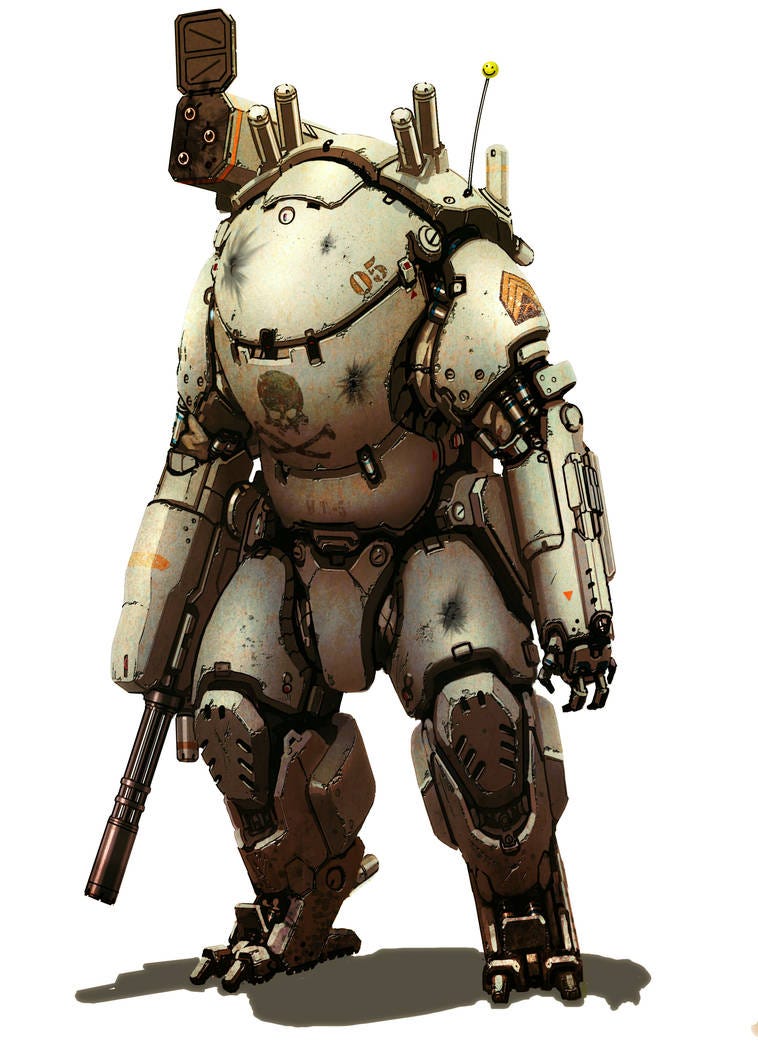
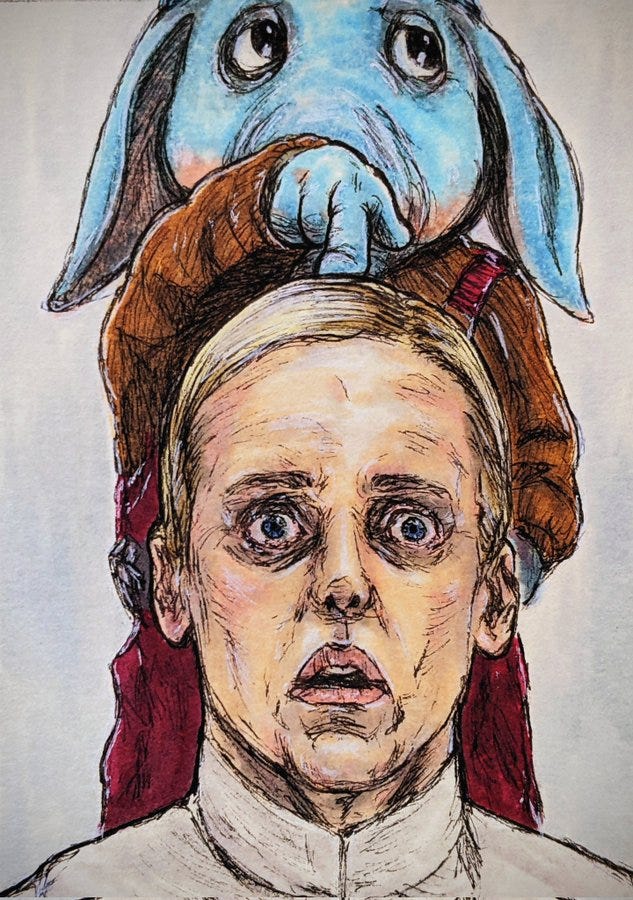
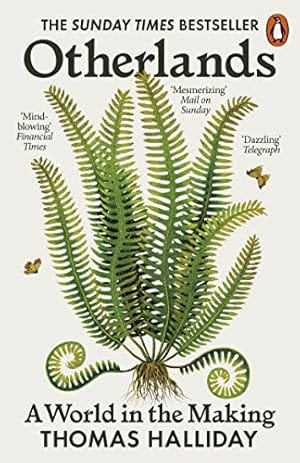
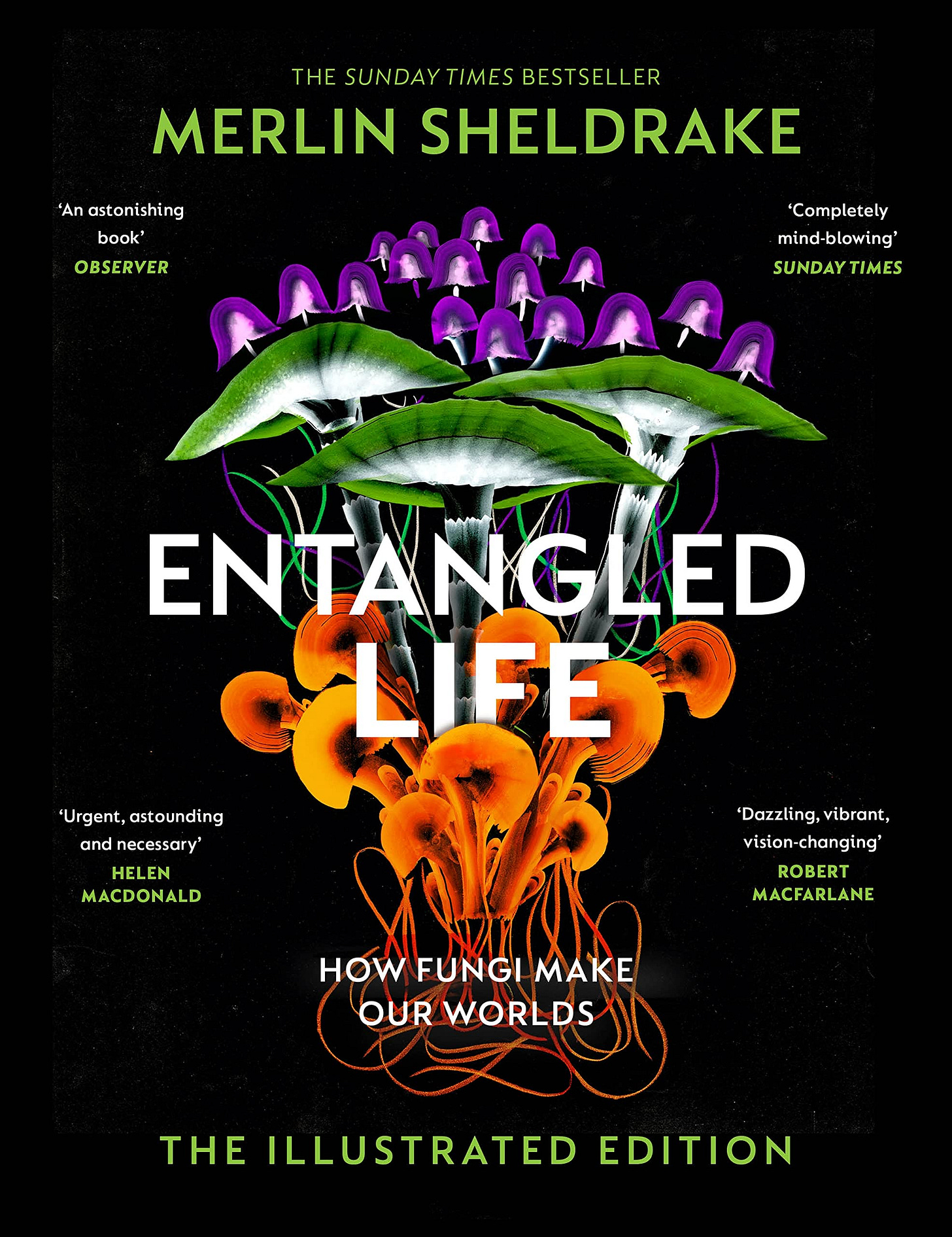



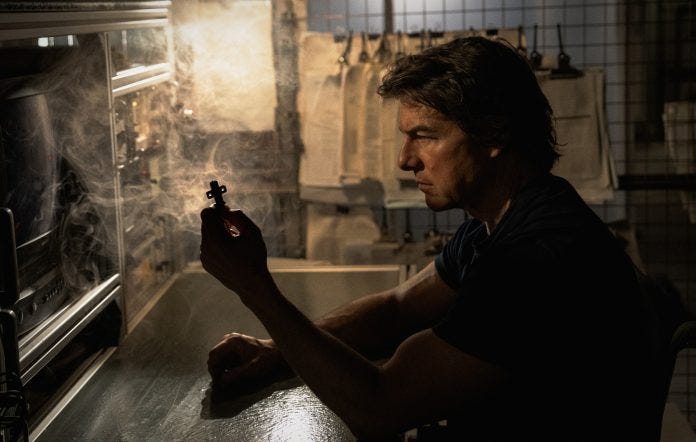
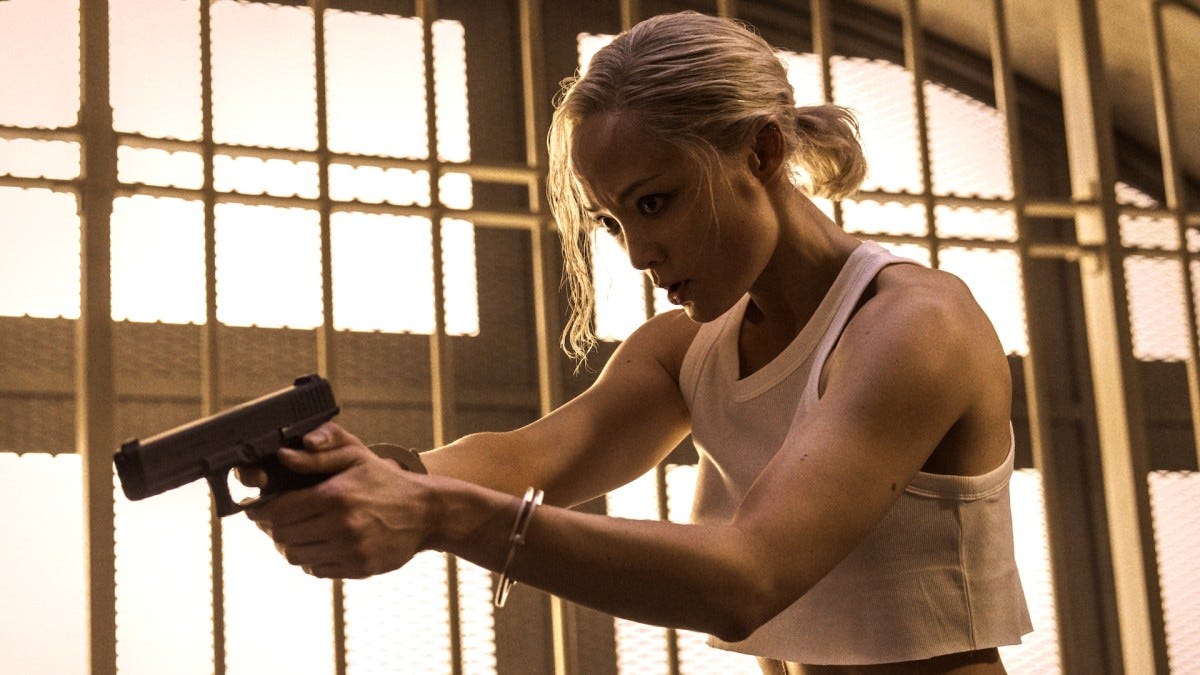
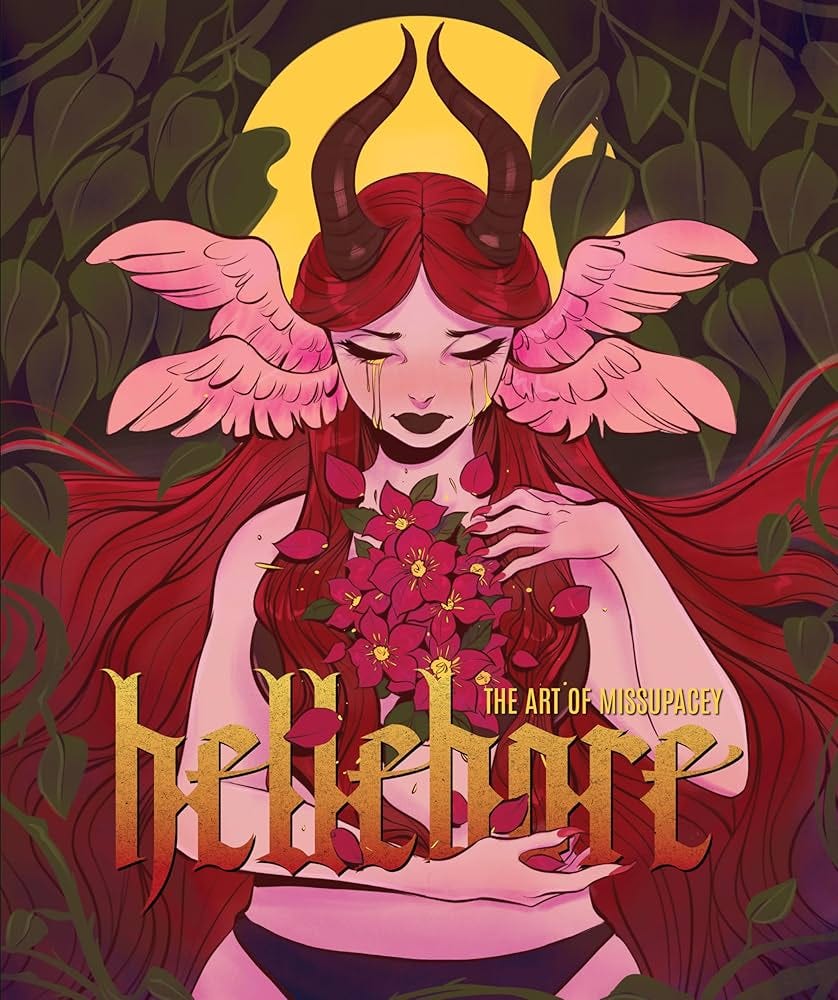
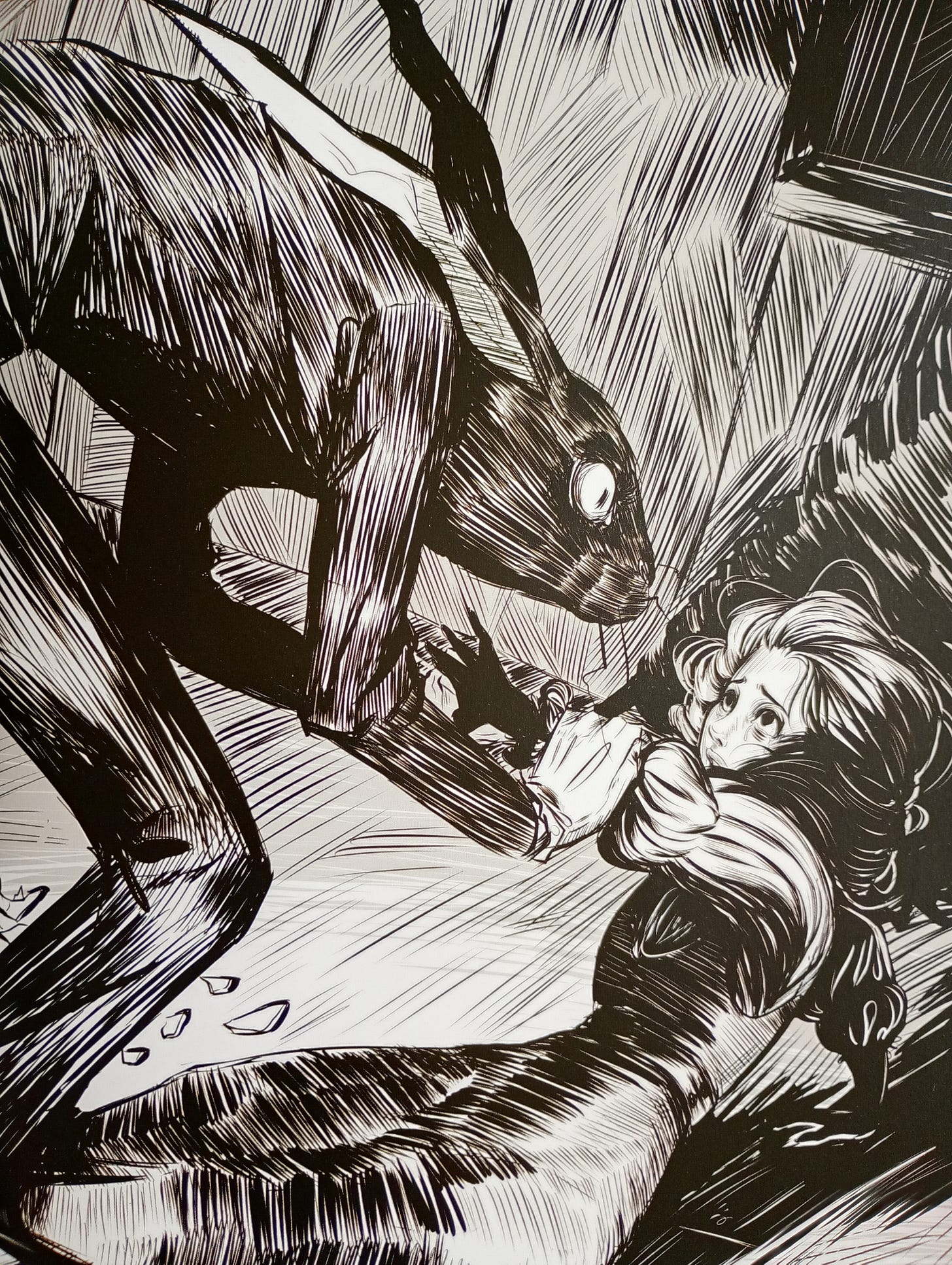
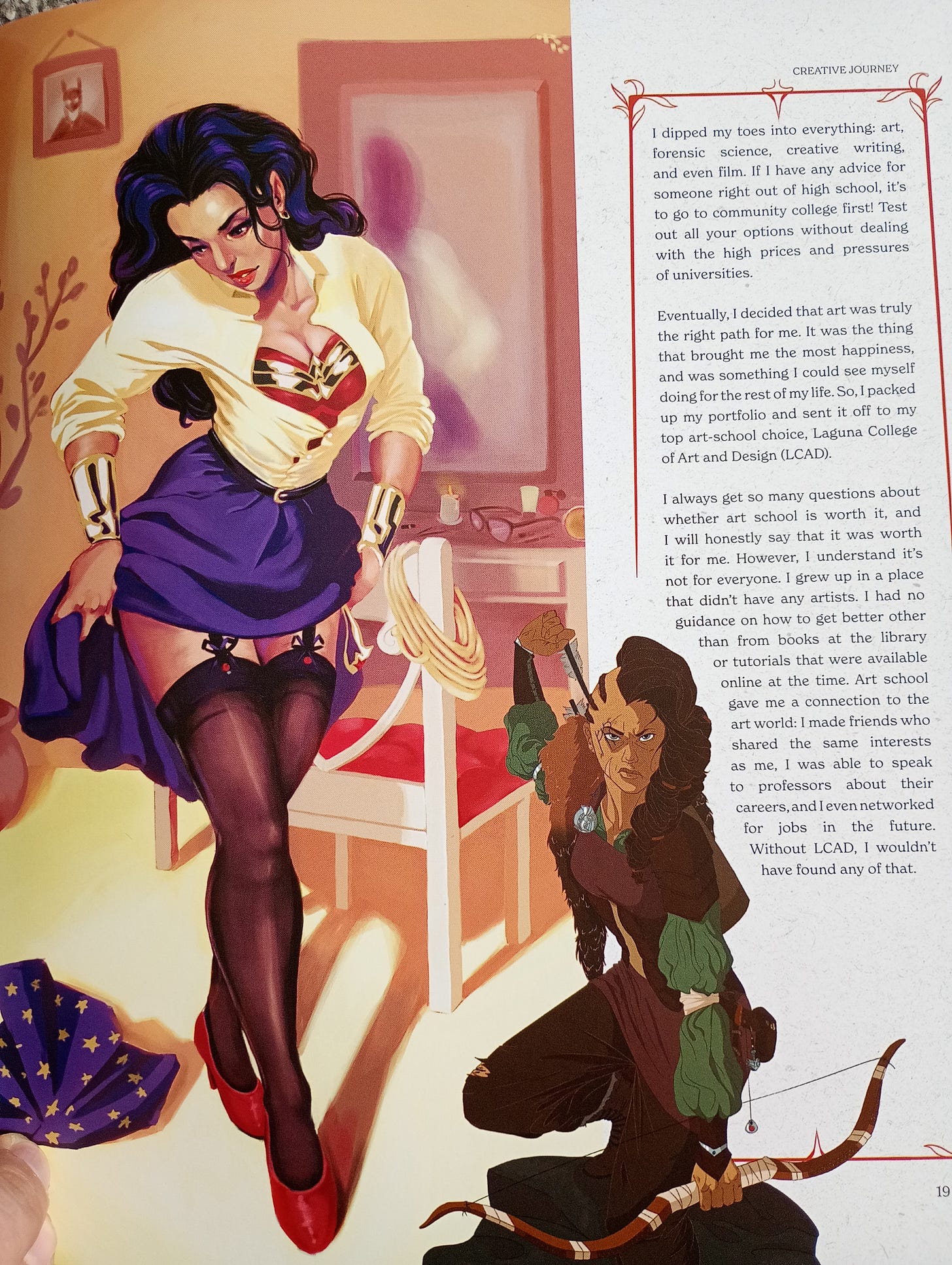
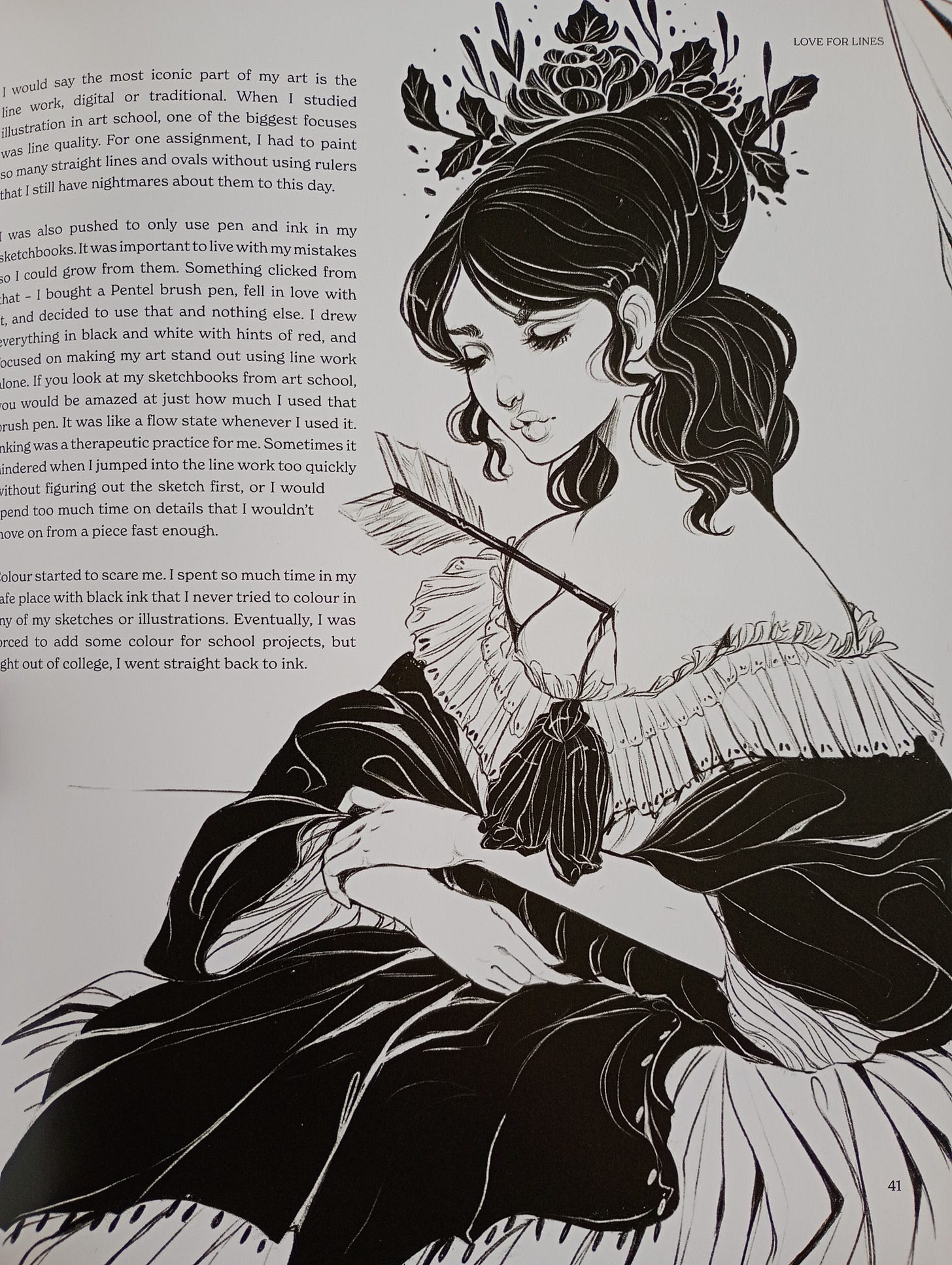
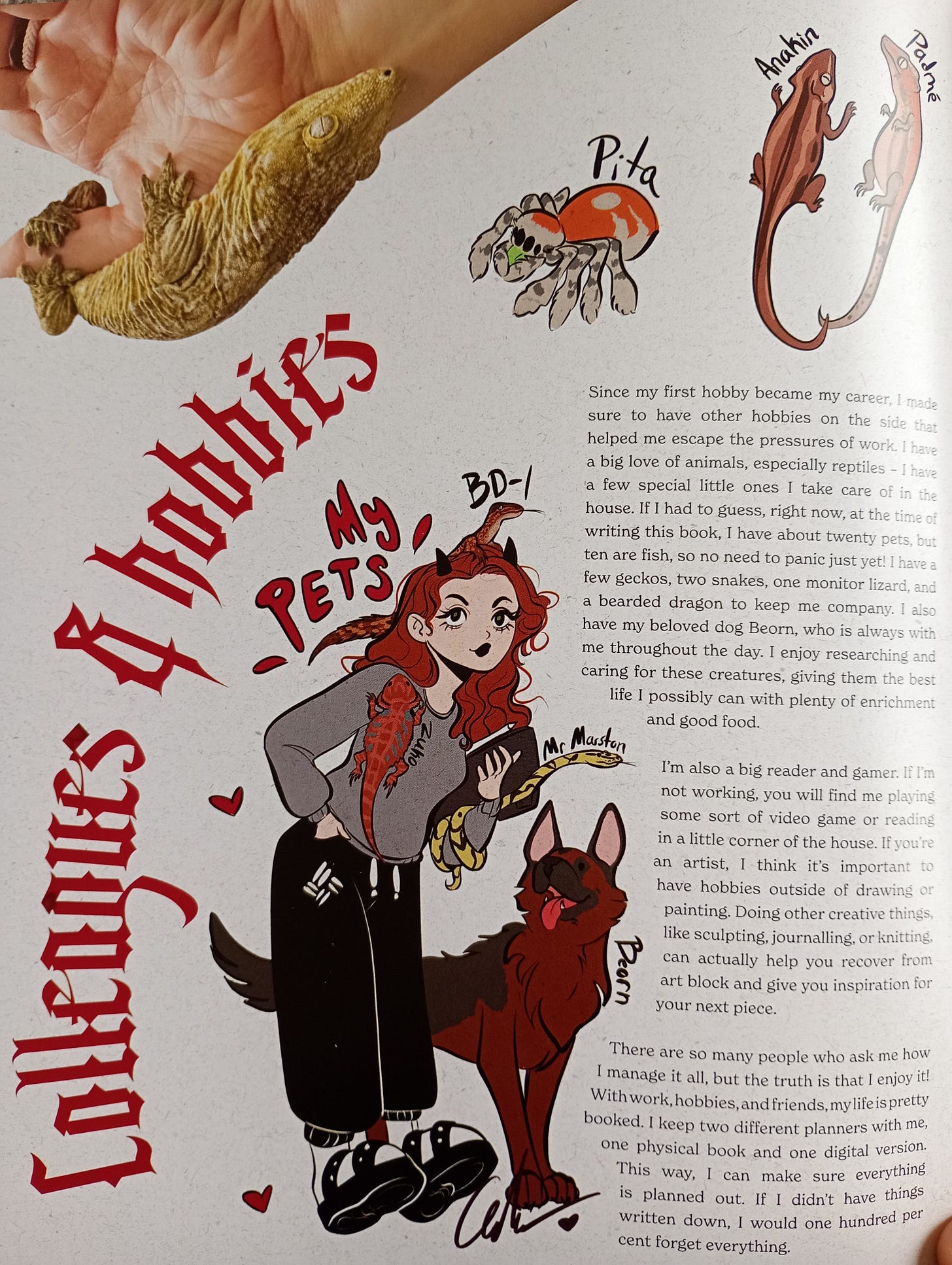
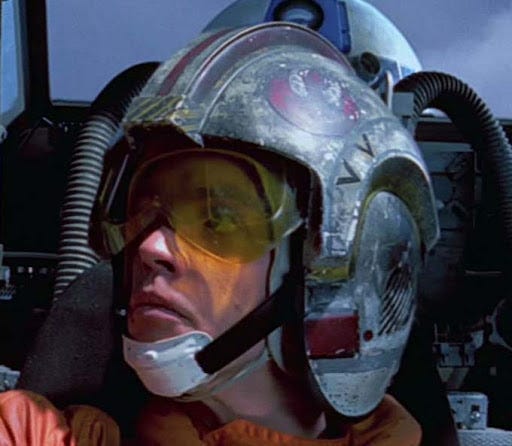





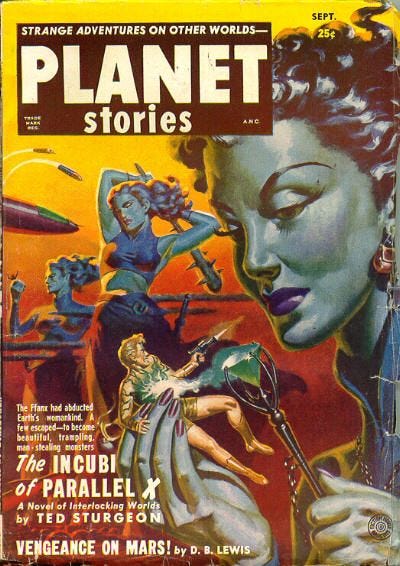
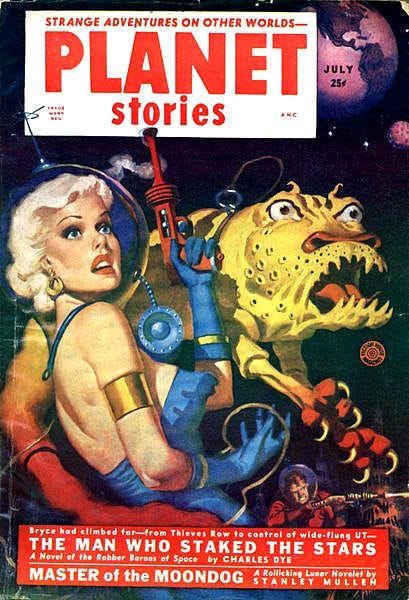
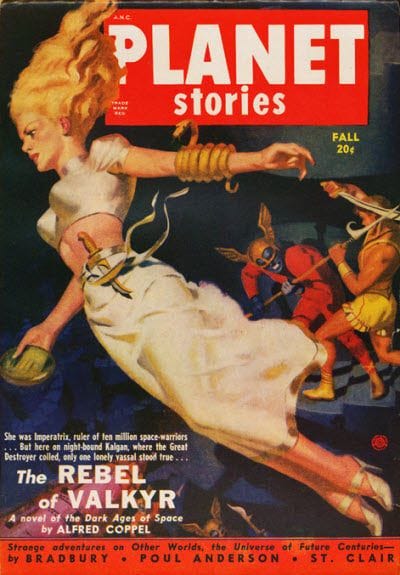


Lilo and Stich was and is a beloved movie in our family. My daughter, now in her 20’s had fairly limed media when she grew up. Repeat viewings of Lilo and Stich, Shrek, Spirit: the something horse of the Cimmaron and Fairy Tale Theater. I’ve always loved the sadness of the film and you really put into words the comfiness and liquid pleasures of the movie. Whenever someone says we need something sturdy, I always quip “like a lobster”
Far too much of stuff-that-I-might-actually-give-a-shit-about in this month's round-up; please watch more anime next month so that I can save myself half-an-hour's reading time. That aside, I loved reading your takes. Am resigning myself to the fact that I'm going to have watch some fucking Star Wars for the first time this millennium – I just keep hearing too much good stuff about Andor not to. Fuckit.
Also, at last I know what's wrong with me: my pattern-discretion neurons are all fucked up. (And the rest, obvs).
Oh and, apropos of nothing, have you ever read any Peter Vansittart? I don't expect you to have (he's hardly well known), it's just that... his Parsifal entranced me, and I just started The Death of Robin Hood, and I DO NOT UNDERSTAND A FUCKING WORD OF IT but it is SO SO VERY deeply _something_, I'm hypnotised, and I keep find myself wondering "I wonder what somebody who can actually read critically & grok things would make of this, somebody with tip-top A1 pattern-discretion neurons, somebody like... Patrick?"